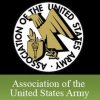
Yellow Ribbon America Breaking News!
By Steve Marshall
U.S. National Guard Bureau
ARLINGTON, Va., Aug. 29, 2017 — One day after Texas Gov. Greg Abbott called up the entire 12,000-member Texas National Guard to assist civilian authorities with the epic flooding resulting from Hurricane Harvey, several other state Guard units are in the hard-hit areas to offer manpower, and support.
“This will be a big undertaking,” said Air Force Gen. Joseph L. Lengyel, the chief of the National Guard Bureau. Lengyel, quoted in the Houston Chronicle. Before the response ends, he added, Guard troops from dozens of other states could be involved in an area stretching from Corpus Christi to Houston and areas inland that have been hit by disastrous flooding.
As of today, the tally of Air National Guard representation from other states includes:
— Alaska: About 13 airmen with the 176th Rescue Wing;
— California: About 90 airmen with the 129th Rescue Wing;
— Connecticut: A C-130 Hercules transport plane with eight airmen from the 103rd Airlift Wing;
— Florida: Nearly 100 airmen with the 920th Rescue Wing;
— Kentucky: Nearly 20 airmen with the 123rd Special Tactics Squadron;
— New York: More than 100 airmen, a C-130, three HH-60 Pave Hawk search-and-rescue helicopters and two C-17 transport jets with the 106th Rescue Wing; and
— Oregon: About 15 members of the 125th Special Tactics Squadron whose missions include rescue as well as restoring airfields so supplies can be flown in.
Other Guard Support
Additionally, six helicopters from units in Utah, Nebraska and North Carolina were heading to Texas, National Guard Bureau officials said. Other Guard missions in the stricken areas include bridging, water rescue, logistics movement, airfield openings and medical water purification.
Meanwhile, neighboring Louisiana is bracing for the rains from what is now Tropical Storm Harvey. As directed by Gov. John Bel Edward, the Louisiana Guard has activated about 210 soldiers and airmen, with an additional 230 full-time Guard members supporting efforts.
Last week, the Louisiana National Guard began positioning Guard members, high-water vehicles and boats in southern Louisiana parishes, including Calcasieu, Vermillion, and Lafayette.
“Being ready and in place is as important as any training that we do, and our engagements at parish level are absolutely critical,” said Army Maj. Gen. Glenn H. Curtis, Louisiana’s adjutant general. “In anticipation of the storm’s track, we continue pre-positioning equipment and vehicles in potentially affected areas, as well as responding to the immediate needs of today.”
In addition to vehicles and boats, the Louisiana Guard has eight helicopters ready to support search and rescue, evacuation and reconnaissance missions as needed, officials said
Picture: Texas National Guardsmen from the 386th Engineer Battalion work with local emergency workers to rescue residents and animals from severe flooding in Cypress Creek, Aug. 28, 2017. Soldiers, fire fighters, paramedics and neighbors aided more than 1,000 people and hundreds of dogs and cats, evacuating them to dry ground and local shelters. U.S. Army National Guard photo by Capt. Martha Nigrelle





 DoD News, Defense Media Activity
DoD News, Defense Media Activity






















